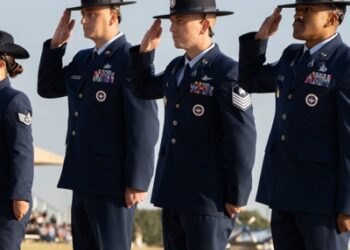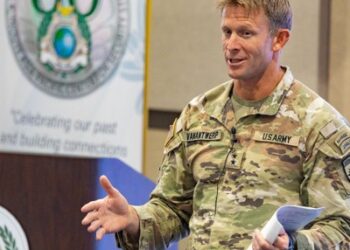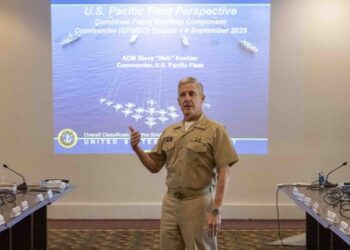**Location and Context**:
The exercise took place at Schofield Barracks, Hawaii, involving the Army’s vice chief and the commander of the 25th Infantry Division. It was designed to simulate an enemy attack from the sea.
**Participants and Technology Involved**:
The exercise incorporated the first launched-effects battery, using an unmanned reconnaissance glider, and new HIMARS rocket launchers to engage ‘enemy’ drones. This reflects a mix of old and new military technologies.
**Duration and Scope of the Exercise**:
This event marked the culmination of a two-week Joint Pacific Multinational Readiness Center (JPMRC) exercise featuring 75 experiments, engaging all U.S. military branches and seven partner nations.
**Key Operations Conducted**:
1. Soldiers from the 11th Airborne Division parachuted into Hawaii from Alaska.
2. Collaborative missions included long-range maritime air assaults and a HIMARS operational raid executed by C-17s from Hawaii to Wake Island.
**Leadership Insights**:
Maj. Gen. Jay Bartholomees emphasized the importance of multi-domain operations, combining land, naval, and air forces. Col. Dan Von Benken noted that the integration of new tech allows for an adaptable approach to warfare.
**Transformation Efforts**:
The “transformation in contact” initiative, initiated last year, aims at rapid modernization across the Army, now affecting all brigades within the 25th Infantry Division.
**Challenges Identified**:
Some challenges included the concealment of new tech and the speed of approval for firing decisions, cited as needing improvement in the operational process.
**Feedback Mechanisms**:
Vice Chief of Staff Gen. Randy Mingus checked in on experiments, seeking soldier feedback on operations. He noted the importance of recognizing problems quickly to facilitate timely solutions.
**Individual Innovations and Observations**:
Capt. Nathan Ley highlighted the capabilities of the new infantry squad vehicle to maintain self-sustainability for two weeks. However, a need for traditional skills remains as new technologies increase complexity and potential for cognitive overload.
**Future Direction of Military Operations**:
Mingus underscored the importance of next-generation command and control systems, expressing a commitment to improving network operations and maintaining situational awareness in dynamic environments.
**Continual Evolution**:
Mingus stated the Army is focused on continuous transformation to enhance agility and responsiveness, learning from past combat experiences while adjusting to future operational needs.













